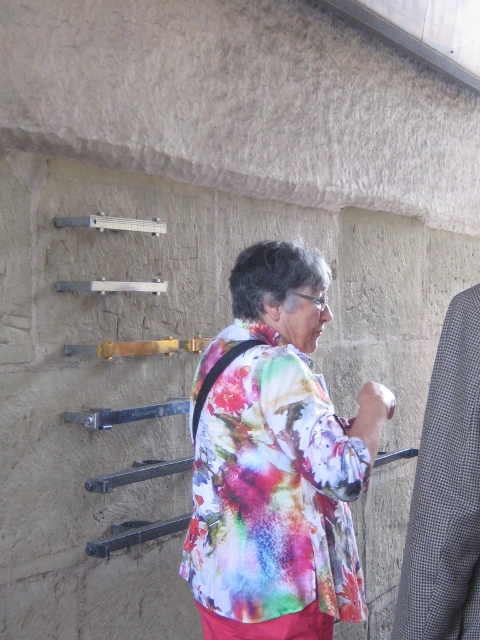Our last day was spent in Bern itself. As usual, we split into two groups. One went first to the Museum of Communication and the other to the Zytglogge and the Einsteinhaus, and then we swapped. The Museum of Communication addresses its subject at all possible levels and is strongly oriented towards children, of whom there seemed to be an unending supply. So some interesting old telegraph equipment including a mockup of Samuel Morse's prototype telegraph sender were in a dark room with flashing lights etc. To be fair, there was an interesting section on Reis' 1861 telephone demonstration using the sentence 'Das Pferd frisst keine Guerkensalat' (Horses dont eat cucumber salad). But the section a guide took us to on the history of computing in Switzerland was well laid out and lit and had many icons like a pre-computer IBM card writer/sorter and a Z4 and the first computer built by the ETH and an IBM 360 and an Apple 1 and a prototype mouse from Xerox PARC and....the guide had us swapping yarns and everybody had a good time. But as I mentioned before, the other bits were a bit boring for us old folk and we gravitated to the cafe even before the appointed time.
.jpg)
But then we were off to see the astronomical clock in the centre of town that people like to say Einstein walked past on his way to the Patentamt each day.
It is a nice clock, with an astrolabe type dial and a crowing cock and a procession of bears (the symbol of Bern (=Baeren)) and a knight who strikes a bell high above. But in the passage underneath is a collection of standard lengths like a Bern foot and various others.
%20(480x640).jpg)
It was almost noon and a crowd was gathering to see the show, but we were able to climb up a spiral staircase to the clock room and see the 1530 mechanism in action.
It still has a verge escapement, although not the original verge and foliot, but since the seventeenth century (?) it has had a pendulum with a massive 100kg spherical bob.
We saw the bellows that makes the cock crow, and the drives to the astronomical dial ( which seems to be earlier still), the bear carousel, and the bells.
.jpg)
The guide then led us up the cobbled street to the Einsteinhaus which is Albert and Mileva's flat and another floor for library and research centre.
We were met by Prof. Dr. Hans-Rudolf Ott, President of the Einstein Society, who gave us a short talk about AEs work and family life around the magic year of 1905.
He had little time for the theory that Mileva had come up with all the ideas, but concluded that although Albert had been one of the greatest scientists of all time, he had not been a successful husband or father. We then went upstairs to join the throng of visitors and look at the tiny flat.
.jpg)
We had the afternoon free, so Kerry and I went to the Zentrum Paul Klee for some light relief before the closing dinner of the tour.
That was a pretty informal affair at a micro-brewery with a to-die-for view of the city in the Altes Tram Depot. I had brought a suit and society tie all that way, and Kerry had a crushed silk dress for the occasion, so we were pleased to see that everyone else had put on their best gear and we all had a jolly time. It was a bit noisy for speeches but we did our best to thank Marcus Cavalier and his wife Sarah for organising such a smooth and instrument-packed trip.
As a final gesture, we trundled our bags the long way round to the Hauptbahnhof the next morning to see the Patentamt where AE had worked (48 hours a week while he was doing Brownian Motion, the Photoelectric Effect and Special Relativity!)
The End